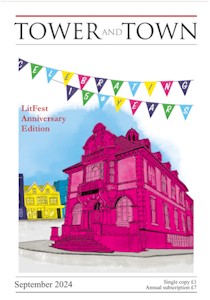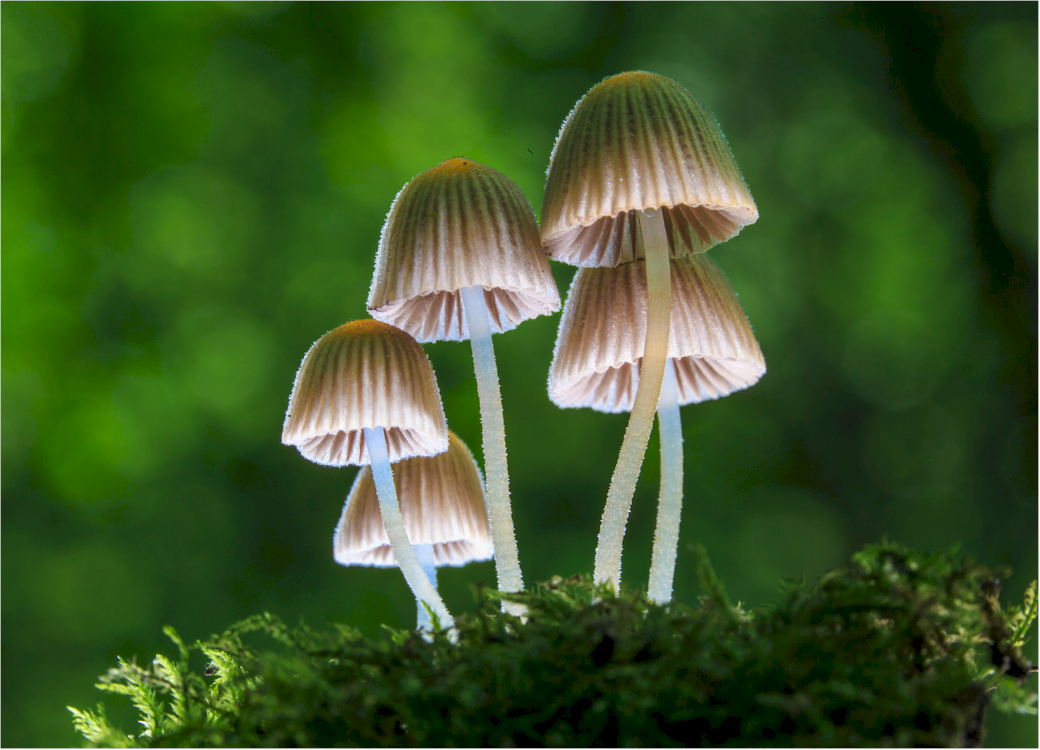

Tower and Town, September 2024 (view the full edition) (view the full edition)Nature NotesThe magic of mushrooms If you go down to the woods this autumn you might be surprised by the number of fungi to be found on the ground and on the branches of oak, beech, spruce and fir. There are well over 10,000 separate species in the U.K. in woods, riverbanks, meadows and unimproved grassland, and we celebrate their fabulous diversity on October 15th, National Mushroom Day. Most of us can recall an encounter with a circle of perfectly-formed field or horse mushrooms that have magically appeared overnight on a field after rain, something I remember from our family camping years. It used to be a common sight in late summer but due to loss of habitat and the chemical sprays used nowadays it's become a rarer event. Those circles are caused by an individual fungus growing underground. The fungus sprouts lots of small threads, called mycelium, in a circular shape. In time, with the right weather, the mushrooms appear at the edge of the circle, creating a "fairy ring." In Shakespeare's "The Tempest" Prospero says of the fairies "You demi-puppets that by moonshine do the green-sour ringlets make, and you whose pastime is to make midnight mushrooms." One needs to be careful with what to bring home to cook: the similar-looking "Yellow Stainer" is an imposter and can leave you with an upset tummy. Its smell is unpleasant and the bulbous base stains chromium yellow. The rogue's gallery of dodgy mushrooms carries dire warnings: Common Inkcap-edible when young but don't consume with alcohol, as it can induce vomiting! Fly Agaric-Poisonous and hallucinogenic-do not eat! Octopus Stinkhorn-largely inedible! Stinkhorn-smells like rotten flesh and attracts flies! Deadly Webcap-toxic to the kidneys! Worst of all Deathcap-one of these can be enough to kill 6 people! I like the quote: "falling in love is like eating mushrooms-you never know it is the real thing until it is too late!" If you want to play safe there is a wide range of mushrooms available in the supermarkets to keep most home foodies happy: Chestnut, Button, Cremini, Portobello, Oyster, Porcini and many more. In the wild there is the Chanterelle found in beech and oak woods, amongst the most commonly consumed species. Then there is the bracket fungus "Chicken of the Woods", the Charcoal Burner (locally common) and the Parasol (the cap is edible and makes a great soup). Amongst the most photogenic are the Bonnet mushrooms: like so many fungi they play an important role in breaking down the big molecules of life. *** The author wishes to acknowledge help received from Fred the Forager - Fred Gillam fred@thewildsideoflife.co.uk 
Credit David White Robin Nelson |